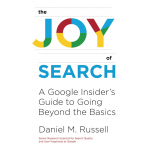I’m interested in how much people understand the world around them, and in particular, how much they understand about what they read. How do we learn about how the world works?
One important way is by incidental learning, or by things you pick up along-the-way, not while engaged in any focused educational activity.
Here’s an example of what I mean:
 |
| Sign in a local gym. |
First off, this is a complex bit of prose–too complicated for what it’s trying to tell you (which is, basically, “chocolate milk helps you recover after a workout”), but it also is cast in a very technobabblish sort of way (“2:1 carbohydrate to protein ratio” and “branched amino acids”).
As I said, I think I’m a fairly literate person, and yet when I read this, I have no idea if it’s true, or just bafflegab.
The thing is, we all see texts like this all the time: sales pitches that are trying to convince us of ideas (“drink chocolate milk, it will help you after your workout”).
The thing is, you’re ALSO implicitly learning that there ARE such things as “branched chain amino acids” and that they’re somehow good for post-workout recovery.
You know that 99 people out of 100 will read this and start to believe that “chocolate milk really does accelerate recovery” and that a “2:1 ratio of carbos to protein is an ideal ratio.”
So this week’s Challenge was in two parts:
1. What does that sign really mean? (Is a 2:1 carbohydrate to protein ratio really good? If so, for what? What do “branched chain amino acids” have to do with accelerating recovery? And are they really something special in chocolate milk? Would it be the same if I ate a chocolate bar and drank a glass of milk??)
2. Do you have any examples of signs like this? (That is, ones that make grand claims, but are not understandable without a Master’s degree in chemistry, or biology, or some other field? If so, share them with us!)
To answer these questions, I did a bit of background research so I’d know what these terms are:
[ carbohydrate to protein ratio ]
Here I’m trying to see if anything has been written on what ratios have been studied (or at least written about). Note that I purposefully did NOT include the 2:1 (or “2 to 1” or “two to one ratio”) in my search–doing so would bias the results towards results that discuss exactly that ratio. For all I know at this point, maybe the ratio is unimportant, or that a 10:1 ratio would be even better… so I just left it out, hoping to learn something from what I read.
The first search [ carbohydrate to protein ratio ] gives lots of results, but mostly having to do with ordinary day-to-day diet recommendations. This one is too open-ended. So next I try:
[ carbohydrate to protein ratio athletic performance ]
These results are better, especially since they’re all about athletic performance, but still, they’re mostly about how to set up your (athletic) diet.
Another search, this time explicitly about recovery:
[ carbohydrate to protein ration post workout recovery ]
(Notice how I keep adding more specific terms to hone in more precisely on the kinds of results I find useful.)
These results are much better, but now I’m seeing stories claiming that ideal ratios from 2:1 to 3:1 to 4:1, depending on which source you believe. (In my results I’m seeing primarily articles from running, bodybuilding, and healthy living magazines. There seems to be some variation and serious disputes about what the “ideal” ratio should be. Here’s an example of the range:
Men’s Fitness — 5:1Hammer Nutrition — 3:1 (but goes on to say that 10:1 might be needed!) Arizona Central — 1:1 (for strength athletes), 4:1 (for endurance athletes) Breaking Muscle and Bayesian Body Building — both say that no particular ratio needed
I’m starting to think this is pretty much the subject of opinion. Maybe a better approach would be to try and figure out where the chocolate milk story (as post-workout recovery drink) started. To do this, I did a search for:
[ “chocolate milk” after workout recovery ]
In order to figure out the original article on this topic. (Here I quoted the “chocolate milk” just to find that as a phrase, and then I wanted only articles about AFTER the workout and mentioning recovery.)
A few clicks in this SERP, and I found that the original article was in International Journal of Sports Nutrition. Now we’re getting somewhere! Let’s try to find the original report about the chocolate milk effect. How can I do that? Since it’s a scholarly journal, I’m going to turn to Scholar.
Doing this same search in Google Scholar led quickly to a 2006 paper, “Chocolate Milk as a Post-Exercise Recovery Aid” published in the International Journal of Sport Nutrition and Exercise Metabolism (2006, 16, 78-91). This seems to be the original article linking chocolate milk with improved post-workout recovery. (I haven’t found anything published earlier. Or, more precisely, nothing earlier about chocolate milk as a recovery drink.)
The abstract of this study tells you a lot:
Nine male, endurance-trained cyclists performed an interval workout followed by 4 h of recovery, and a subsequent endurance trial to exhaustion at 70% VO2 max, on three separate days. Immediately following the first exercise bout and 2 hours of recovery, subjects drank isovolumic amounts of chocolate milk, fluid replacement drink (FR), or carbohydrate replacement drink (CR), in a single-blind, randomized design. Carbohydrate content was equivalent for chocolate milk and CR. Time to exhaustion (TTE), average heart rate (HR), rating of perceived exertion (RPE), and total work (WT) for the endurance exercise were compared between trials. TTE and WT were significantly greater for chocolate milk and FR trials compared to CR trial. The results of this study suggest that chocolate milk is an effective recovery aid between two exhausting exercise bouts.
First off, this is a tough study for the poor cyclists.
They tested the athletes by first having them workout to exhaustion, wait for four hours while drinking various fluids, then workout again to exhaustion.
This isn’t just “I’m tired,” but is exhaustion, which is when you’re literally unable to do any more work. It’s fairly unpleasant, but these 20-something year-old (all male) Indiana University students did in the service of science.
The good news: The results are pretty positive.
The athletes who drank chocolate milk did better (in duration and heart rate) during the second workout than ones who drank only the carbohydrate replacement drink (Endurox 4) or the fluid replacement drink (Gatorade). Interestingly, the athletes worked-to-exhaustion about the same for chocolate milk OR Gatorade, but the carbohydrate drink (Endurox) significantly reduced their performance during the second workout trial! (The carbo-drink guys took gave up 10 minutes earlier than their choc-milk or Gatorade buddies.)
Bottom line: By this study, chocolate milk works just ever-so-slightly better than Gatorade, and a lot better than a carbo-replacement fluid.
You can read the paper (and all of the ones that follow-up on this) to figure out why, but now we know where this story began–with a study about chocolate milk vs. Gatorade vs. a carbo-drink.
It’s interesting, and I believe the results. But it’s also worth noting that, in a small note on page 90, that the study was supported by the Dairy and Nutrition Council, Inc. whose mission is to “…leadership in nutrition research and education by encouraging food selection patterns that include dairy foods…” (Which probably why they don’t really go to much trouble to point that that Gatorade works just about as well as chocolate milk. This study wasn’t funded by Gatorade.)
NOW, let’s pop back to our topic: What about those “branched-chain amino acids”?
Wikipedia tells us that: “A branched-chain amino acid (BCAA) is an amino acid having aliphatic side-chains with a branch (a central carbon atom bound to three or more carbon atoms). Among the proteinogenic amino acids, there are three BCAAs: leucine, isoleucine and valine…”
The word proteinogenic just means that these amino acids are precursors to making proteins for muscle tissue. That’s probably a great idea for post-workout recovery since a hard workout tears down proteins. I did a quick check to see what I could learn:
[ BCAA workout recovery ]
and found a few articles, e.g., this one on “Branched-chain amino acid supplementation does not enhance athletic performance but affects muscle recovery and the immune system.” (J Sports Med Phys Fitness. 2008 Sep;48(3):347-51) that suggests that BCAA actually DOES aid in post-workout muscle recovery.
If you think about it for a minute, plain old milk has the BCAAs that work to improve post-workout recovery, while the chocolate provides the carbohydrates.
In other words, if you drop a teaspoon of regular sugar into the glass of milk, you’ll get the amino acids from the milk, and the carbs from the sugar. (That’s the entire contribution of the chocolate–there’s nothing magical about chocolate, other than that it tastes really good.)
Or, if you don’t want regular old sugar, eat a small banana and you’ll get the same effect.
Bottom Line: The bafflegab seems to be correct, if a little difficult to read.
I think I’d write something like this:
Chocolate milk has been shown to improve your recovery after a hard workout. The amino acids in the milk, and the carbohydrates from the chocolate help your muscles regenerate after a hard workout. (And it tastes great!)
Or something like that.
But the really good news is that it’s true that the amino acids from milk are proteingenic, and do help your muscles recover. And getting that little bit of carbos into your system right after working out DOES help your whole system recover more quickly.
Personally, I think I’ll just drink a glass of milk and a bit of chocolate. It’s a bit cheaper, and fun as well!
Search Lessons
There are several here. Let’s start at the top:
1. Just because it’s poorly written (or bafflegabby in style), doesn’t mean it’s wrong! When I read the sign, I was very skeptical of the claims. But the sign is right, if somewhat more complicated than need be.
2. Look at multiple articles to see what the consensus is (or the lack of consensus). The “ideal ratio” claim is very much open for dispute. With just a little looking, I could find arguments for every ratio from 1:1 to 10:1… and articles that say “it doesn’t matter…”
3. Use Scholar to backtrack to the original article. Strong claims like this (especially those with a scientific sounding backstory) can usually be backtracked to the original author’s work in Google Scholar. In this case, it was pretty straightforward.
4. Take note of who supported the original work. It often lets you interpret what’s going on in the document. In this case, the study seems to be accurate and well done (although the writeup is slightly biased in favor of the sponsoring organization).
5. More generally, be aware of what incidental learning you’re doing–and CHECK when something seems fishy. Even if it checks out, you’ll now know you can trust what you would otherwise have just accepted.
I hope you enjoyed this background search Challenge. Obviously, if I was going to study this in depth, I would have read more articles in greater depth–but this was a pretty quick way to understand what’s going on in this area–and shows how to check out some otherwise difficult to understand claims.
P.S. FWIW, I went to the gym today, eager to do a workout and try this magical chocolate milk. But I was too late–it was all gone by 5PM. Ah well, try again tomorrow!
Search on!




